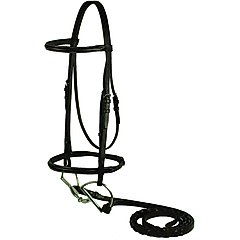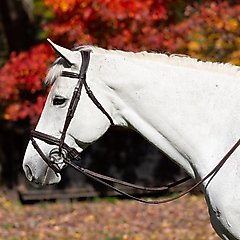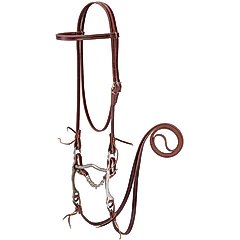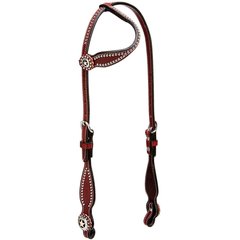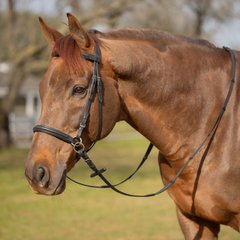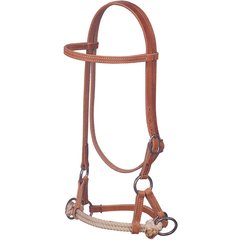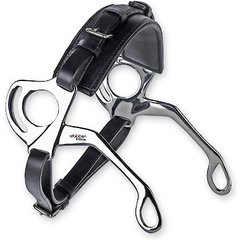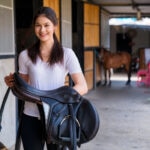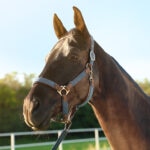How To Choose the Best Horse Bridle for Your Horse
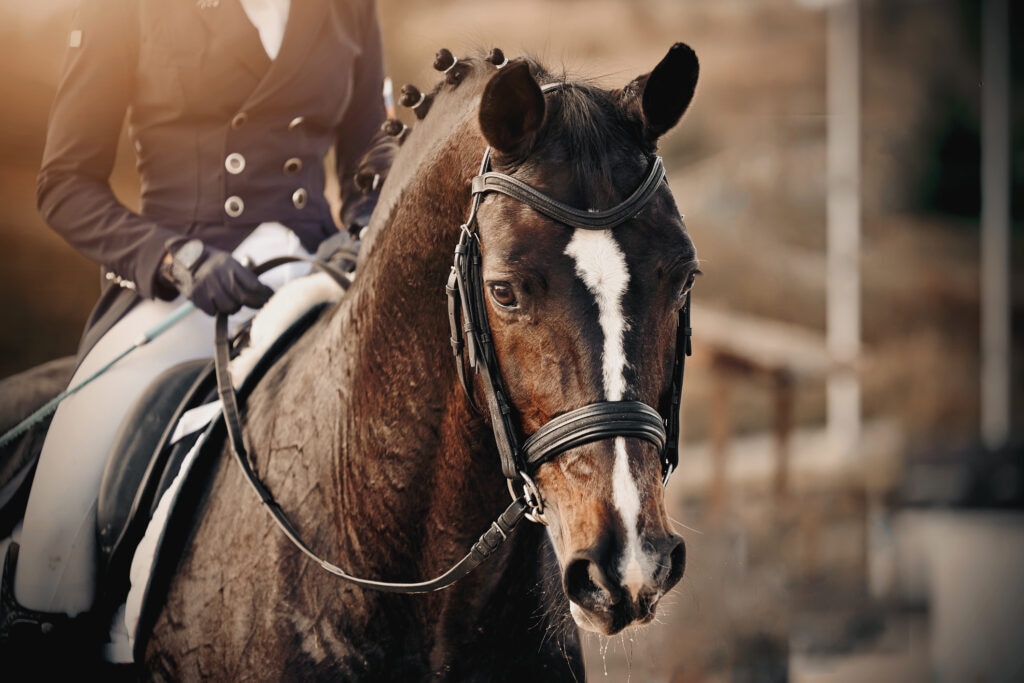
Photo by Azaliya/iStock / Getty Images Plus via Getty Images
“Does my horse need an English horse bridle or a Western horse bridle? And what size are they? Cob? Draft?” These are the questions you’re likely asking yourself when shopping for a bridle for a horse—and we’re here to help.
Why Horse Bridles Are Important
Choosing the proper horse bridle supports a good relationship with your horse. When sized and fit correctly, a horse bridle helps you establish clear communication for an enjoyable ride.
Correct fit also eliminates pressure points that can cause pain. Plus, if you plan on competing, you’ll need a bridle approved to meet the rules for the circuits you show on.
Types of Horse Bridles
Riders have many types of bridles to choose from, and discipline is one of the main factors in knowing which style to purchase.
Bridles fall into three categories: English, Western, and Bitless.
English Horse Bridles
English horse bridle parts include:
- Browband
- Noseband
- Bit
- Set of looped reins that buckle at the horse’s withers
Recommended Product
These bridles are used by hunter/jumper riders, dressage competitors, eventers, and trail and endurance riders.
Advanced riders might use a double bridle, which has two bits and two sets of reins. Double bridles offer the rider a greater level of communication between you and your horse for better precision of high-level dressage movements.
Bridles can come with or without a flash, which is a strap to help keep a horse’s mouth closed.
Recommended Product
A bridle may also have a curb chain, which is generally included in a double bridle, a Pelham bridle, or with a Kimberwick bit.
- A Pelham bridle bridle has a bit that incorporates features of a curb and a snaffle bit to operate similarly to a double bridle.
- A Kimberwick bit is an English-style bit with D-shaped rings and a curb chain.
Western Horse Bridles
Western bridles come in various styles, including those with a browband, or a single or double ear piece. These also include a bit and a set of reins.
Recommended Products
Most Western disciplines ride with split reins (unattached at the withers), though barrel racers and some speed event competitors use a looped rein like English riders.
Usually, Western bridles include a chin strap, also called a curb strap or chain, that rests under the horse’s chin and attaches to both sides of the bit. A curb strap helps prevent the bit from rotating in the horse’s mouth and applies pressure under the jaw when a rider pulls the reins.
Bitless Horse Bridles
Bitless bridles have a headstall and reins but no bit. Instead of a bit in the horse’s mouth, the noseband applies pressure on the nose to direct the horse.
There are multiple types of bitless bridles, which can include side pulls, which are often used to train young horses, and hackamores, an option used in a variety of disciplines like Western pleasure, reined cow horse events, show jumping, and barrel racing.
Recommended Products
Bitless bridles can be a good choice for horses with mouth or jaw injuries or older horses with tooth problems. Some horses simply ride more comfortably in a bitless bridle.
What To Look for in a Horse Bridle
Shopping for bridles can be a lot of fun because there are many styles to choose from, and they often offer customization like color, bling, and custom patterns that are stamped or hand-carved onto the leather.
Make sure the bridle material is high-quality, that there are no rips or defects, and that it is free from sharp points that can irritate your horse’s face. Cuts or abrasions from faulty equipment are no fun!
How To Choose the Right Size Horse Bridle
You know how uncomfortable it is when you wear a pair of boots that are too tight. Your horse experiences similar discomfort while wearing a poorly fitted bridle. So choosing a bridle created for their head shape is important.
Bridles come in a variety of sizes, including:
- Miniature: Sized for miniature horses typically ranging from 34–36 inches tall.
- Pony: Fitted for horses bigger than miniatures but smaller than a full-sized horse.
- Cob: Designed for petite breeds like Arabians, Morgans, and smaller Quarter Horses.
- Horse: The most common size for a range of horses, including Thoroughbreds, Quarter Horses, and similarly built breeds.
- Warmblood or oversized: Built for breeds with larger heads like warmbloods, some Friesians, and draft crosses.
- Draft: Fitted for draft breeds like Belgians, Clydesdales, and Percherons.
How To Fit a Bridle on a Horse
Even though you’ll buy a bridle fit for your horse’s head size, you’ll likely need to make minor adjustments to get the best fit.
Next time you buy a new bridle, follow these seven steps for optimum comfort.
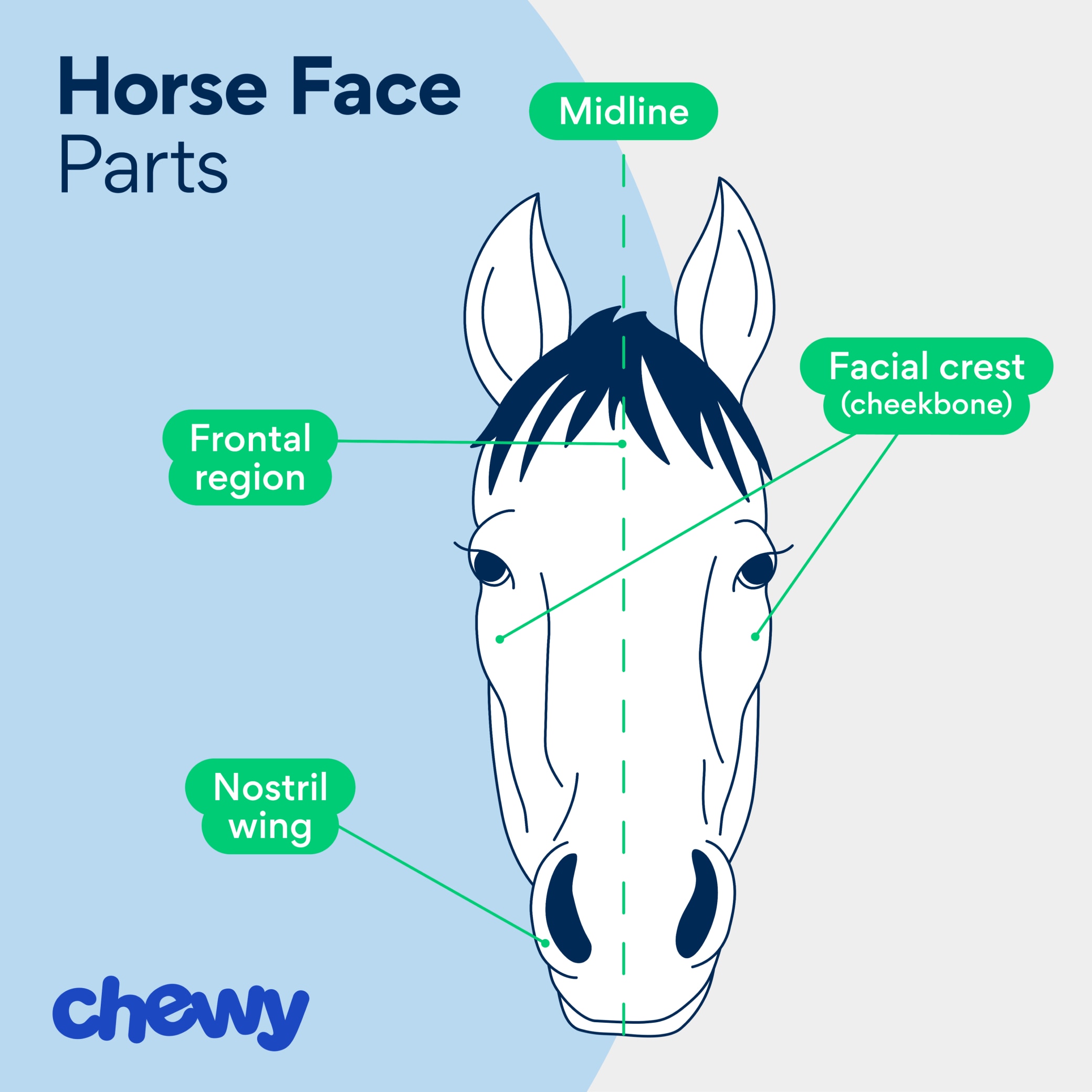
Photo by Chewy
1. Fit the Headpiece Without the Bit
Before attaching the bit or reins, place the headstall on your horse’s head. The headpiece, also called the crown, rests on your horse’s head just behind the ears. It should sit loosely below the ears without pinching in or around the ears.
2. Adjust the Cheekpiece
For any style of bridle, adjust the cheek pieces to the center holes and place them on your horse’s head to determine the initial fit.
Adjust both sides up or down as needed so that they are an even length, with the buckles falling about even with the horse’s midline and resting just below the facial crest.
Be sure there are at least one or two extra holes at the top for shortening if needed.
3. Adjust the Browband
Make sure the browband is positioned across your horse’s frontal region and is loose enough to avoid creating pressure points below the ears or bony points on the side of his head.
A poorly fitted browband pinches your horse and can pull the headpiece out of position.
4. Tighten the Throatlatch
The throatlatch sits behind the horse’s jawbone. All English bridles will have one, but not all Western ones do. If your bridle has one, buckle it so that you can easily fit four fingers stacked sideways between the leather and your horse’s throat.
5. Fit the Noseband
Nosebands can help keep a bridle from shifting around, so you want to be sure it’s in the right spot. When properly adjusted, it should fall about two fingers below the facial crest (also called the cheekbones).
It should also be snug enough to hold the bridle in place without creating pain points on your horse. Be sure the noseband has enough holes to get it tight enough for a good fit while allowing you to fit two fingers in between either side of the nasal bone.
6. Adjust the Flash Strap
If your horse’s bridle has a flash strap, this wraps around his nose and buckles under his chin in front of the bridle. Buckle it so that it is not loose, but don’t overtighten, to avoid pinching the sensitive area around the mouth.
7. Add the Bit and Reins
Once the headstall fits comfortably, remove it from your horse to add the bit, curb strap (if needed), and reins. Adjust the curb so you can fit two fingers between the horse’s chin and the strap or chain.
8. Adjust the Bit Placement
When the cheek pieces on a headstall are adjusted correctly, the bit should rest so that there are one to two “wrinkles” or folds in the corners of the lips.
A bit that is too loose can bang on the horse’s teeth or allow room for a horse to put their tongue over the bit—taking away all control.
A bit that is too tight creates pinching and pressure points. There may be more folds at the edges of the mouth and your horse will likely react or even back up.
Signs of an Ill-Fitting Horse Bridle
Before heading out on a trail ride, lesson, or training session with a new bridle, double-check all parts to be sure they are buckled and fitted correctly. Make sure nothing is too tight or too loose.
If you notice any of these signs, adjust the bridle further or consider that it might not be the right size:
- Any part of the bridle is too tight or too loose
- The bit has no contact with the horse’s mouth
- Behavioral changes like head tossing, mouth gaping, or evading contact
- Rub marks, raw spots, or hair loss around the poll, cheeks, noseband, or lip
This content was medically reviewed by Jennifer Rice, DVM, CVSMT, Chewy veterinarian.
